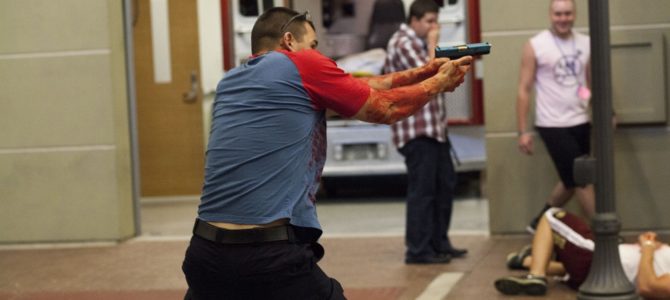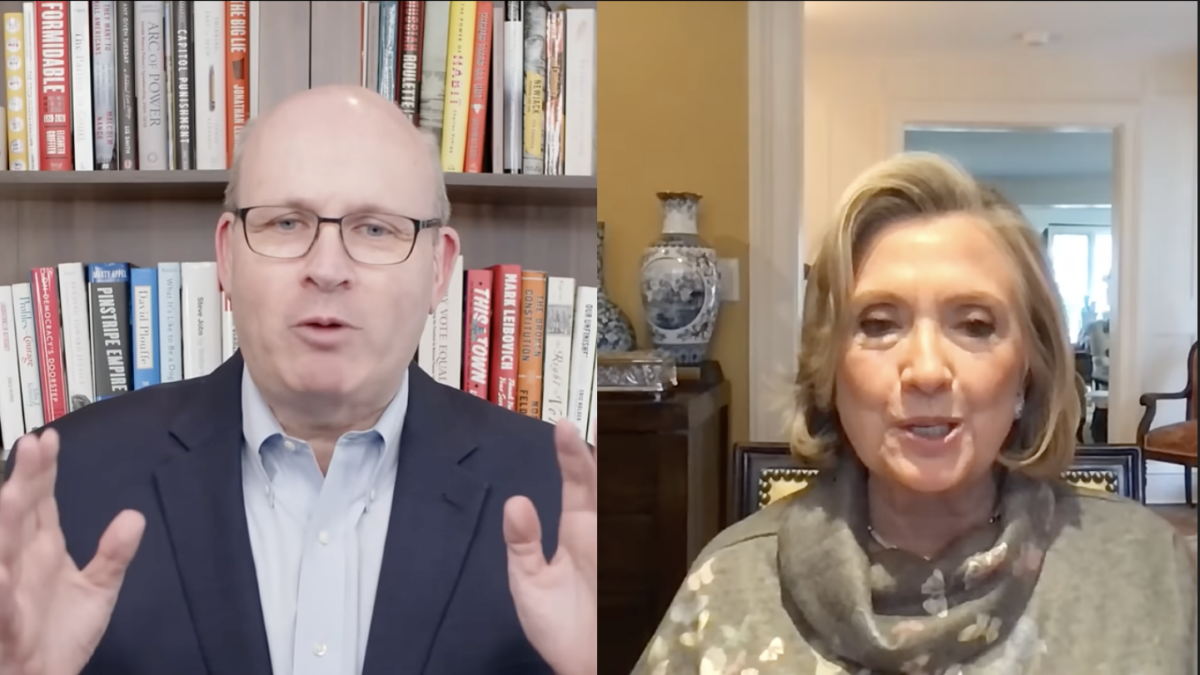
School shootings aren’t shocking any more. Of course they’re tragic, heinous, impossible to understand and painful to experience, even from afar. But can anyone really claim to be shocked by them anymore?
My initial reaction to hearing of an active-shooter situation is “Oh no, not another one!” Our familiarity with the narrative of a child killing his peers is a tragedy in itself. And, in today’s world of instant opinion, each instance is used within minutes to prove a point, or even to push for a certain public policy. Sadly, these shootings aren’t just tragedies, they’re data points. And they’re trending upwards.
So, mostly well-intentioned people on both sides, including yours truly, find the nearest keyboard. “We have to do something!” we say. Before we know it, we’ve divided ourselves into two sides on the issue, each opposing the other passionately. It is easy to forget that both sides are passionate because they want to see themselves and their loved ones safe.
Classical Versus Romantic Thinkers
A website once told me every man should read a book called, “Zen and the Art of Motorcycle Maintenance.” I like motorcycles, so finding a free download of the book, I started to read it. I don’t recommend it, as it had some disparaging things to say about religion, for one thing. But one concept the author articulated has stuck with me, and I think it helps define both “sides” of this argument respectfully. The author, Robert Pirsig, separates human understanding into two forms: Classical and Romantic. He explains,
A classical understanding sees the world primarily as underlying form itself. A romantic understanding sees it primarily in terms of immediate appearance. If you were to show an engine or a mechanical drawing or electronic schematic to a romantic it is unlikely he would see much of interest in it. It has no appeal because the reality he sees is its surface… But if you were to show the same blueprint or schematic or give the same description to a classical person he might look at it and then become fascinated by it because he sees that within the lines and shapes and symbols is a tremendous richness of underlying form.
In the book, the narrator uses his friend John as an example of a romantic thinker. When his motorcycle breaks down, he takes it to the experts. When the narrator suggests he fix it himself, using a tin can as a shim, he’s insulted that a can could be used to fix his expensive motorcycle.
The book’s narrator is a classical thinker, partly because he’s seen the “experts” do more harm than good to his machine. If his bike is running rough, he mentally catalogues the systems in the machine and considers which part of which system could be causing the problem.
Maybe you can see by now where I am going with this. The disagreement on what to do about school shootings can also be explained by the same categories: romantic thinkers want the “experts” to do something about it. Classical thinkers fear they will be deprived of the tools to do something about it themselves.
That’s a legitimate fear, because, in almost every case, that’s exactly what the “experts” want to do: ban guns, or a certain kind of gun, or a certain accessory to a certain kind of gun. If those weapons aren’t available, people won’t be able to use them on each other, they say. But let’s exercise a classical way of thinking on this problem. Let’s break down the problem into its distinct systems and look at what’s malfunctioning.
What Every School Shooting Has in Common
Every school shooting has two factors in common: guns and a violent person. So, let’s pretend we can get rid of one of those things and see how the other works on its own. If we get rid of guns, what do we still have? A person who wants to kill other people and can find other means to do it. But if you get rid of the violent person, what do you have? An inanimate object. A paper weight, so to speak.
Every solution the “experts” suggest leaves classrooms at risk from those still-violent students, but, yes, it’s possible that banning guns will stop the segment of potential shooters who are too lazy or stupid to come up with other means of violence. But in stopping that segment of violent people, we’d also hamper the ability of peaceful people to defend themselves against creative and motivated killers. Or, in other words, we’d take away the tool that would let people deal with the remaining problem themselves.
Of course, “Guns don’t kill people,” but they do make it easier to kill people. They make it easier for bad people to kill good people, and for good people to kill bad people. The lethality of firearms is the basis for both sides’ arguments.
As we can see in our little diagnostics exercise above, however, banning guns doesn’t fix the problem. The guns are doing exactly what they’re designed to do: firing when the trigger is pulled. It’s the people pulling the triggers who are malfunctioning.
How to Make Violent People Disappear
We could fill reams of paper digging into what “weaponizes” these students: is it violent movies, TV, and video games? Is it the loneliness brought on in part by social media? Is it growing up without a role model? Not having friends?
Is it a parent who never bothered to get a gun safe or never spent time with his kid? Is it a police department that never followed up on reports? A federal program that directed them specifically not to follow up on reports? A news media that ensures every mass murderer’s name and face is imprinted on the mind of every viewer and maintains a hall-of-fame-like list of killers and their body count for the mentally disturbed to aspire to surpass? Is it the fact that they were never taught that every person has dignity as an image bearer of God?
All of these may indeed be factors, but there’s something else, too. I grew up watching old reruns of “Bewitched” on TV Land. Imagine you were a student sitting in a classroom with a gunman aiming down his sights on your class and you could wiggle your nose to make either him or the gun disappear, but not both. Which would you get rid of to guarantee safety for your class?
Of course, we can’t do it by wiggling our noses, but our goal should be making the violent student disappear, hopefully by improving our culture and giving him a healthy, happy, and fulfilling life. But when we can’t ensure that our society is not producing killers, we must be sure that the “experts” do not take away the remaining tool to keep our loved ones safe.









